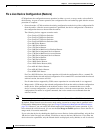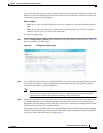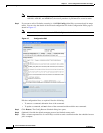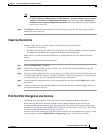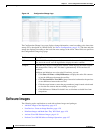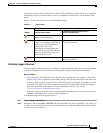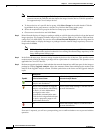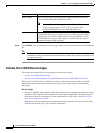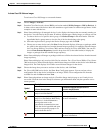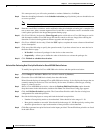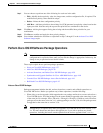
4-30
Cisco Prime Network 4.0 User Guide
OL-29343-01
Chapter 4 Device Configurations and Software Images
Software Images
If appropriate, the images can be activated as part of the distribution job, and these tasks can also be
performed:
• Commit Cisco IOS XR (so that changes are saved across device reloads).
• Perform a warm upgrade, where one Cisco IOS image can read in and decompress another
Cisco IOS image and transfer control to this new image (thus reducing the downtime of a device
during planned software upgrades and downgrades).
Note You can perform a warm upgrade only on Cisco IOS devices 12.3(2)T or later, such as 12.4T,
15.0, 15.1T, and for ISR 800/1800/2800/3800 series and 1900/2900/3900 series.
• Perform an in-service software upgrade (ISSU) for Cisco ASR 903 devices to update the router
software with minimal service interruption. CCM performs a single command upgrade that installs
a complete set of sub-packages using one command. Before using CCM to perform a single
command upgrade, the ASR 903 device must already be booted in sub-package mode. The device
must be configured in SSO redundancy mode.
Note Cisco ASR 903 devices must be booted in sub-package mode only through boot flash and
not through any sub-directories of boot flash before using CCM to perform an ISSU. For
more information, see the Cisco ASR 903 Series Router Chassis Configuration Guide.
• Perform an in-service software upgrade (ISSU) for Cisco 9000 series devices and CRS devices to
update the router software with minimal service interruption. The option to perform ISSU is
supported only for SMU packages.
• Activate Cisco ASR 5000 boot configuration files
Prime Network uses the image staging location and transport protocol (TFTP, by default) specified on
the Image Management Settings page. Prime Network displays the available upgradable modules and the
storage partitions (if any) on the network element for the image distribution, from which you can choose
the storage location you want to use.
The final step is to schedule the distribution job to occur either as soon as possible or at a future date
(the default is as soon as possible).
What is Upgrade Analysis?
An upgrade analysis checks the attributes of the selected image, checks certain device features, and
generates a separate report for each device. It is required before any image can be distributed. However,
even if the upgrade analysis reports errors, Prime Network will allow you to proceed with the
distribution (because an error can be a simple matter of an unpopulated field). Prime Network gathers
this information from two sources:
• The Prime Network image repository, which contains information about minimum RAM, minimum
Flash, and so on, in the image header.
• The Prime Network inventory, which contains information about the active images on the device, as
well as Flash memory, modules, and processor details.
Note For Cisco Nexus 5000 or Cisco Nexus 7000 series devices, Prime Network displays the upgrade
analysis results for both the system and kickstart images selected for the device.



